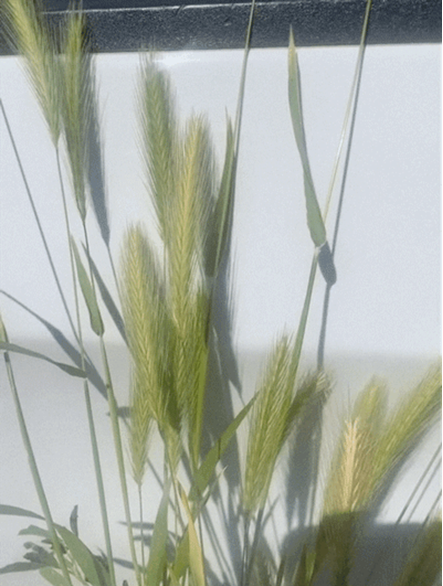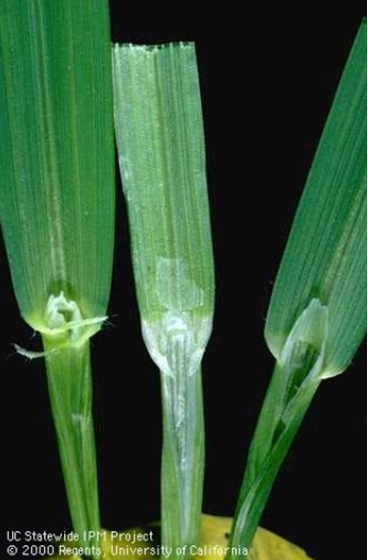
I hope you are frolicking in the fields of wildflowers picking the prettiest bugs.
I was scheduled to interview for plant pathologist position at Yuma on October 18, 2019. Few weeks before that date, I emailed Dr. Palumbo asking about the agriculture system in Yuma and what will be expected of me. He sent me every information that one can think of, which at the time I thought oh how nice!
When I started the position here and saw how much he does and how much busy he stays, I was eternally grateful of the time he took to provide me all the information, especially to someone he did not know at all.
Fast forward to first month at my job someone told me that the community wants me to be the Palumbo of Plant Pathology and I remember thinking what a big thing to ask..
He was my next-door mentor, and I would stop by with questions all the time especially after passing of my predecessor Dr. Matheron. Dr. Palumbo was always there to answer any question, gave me that little boost I needed, a little courage to write that email I needed to write, a rigid answer to stand my ground if needed. And not to mention the plant diagnosis. When the submitted samples did not look like a pathogen, taking samples to his office where he would look for insects with his little handheld lenses was one of my favorite times.
I also got to work with him in couple of projects, and he would tell me “call me John”. Uhh no, that was never going to happen.. until my last interaction with him, I would fluster when I talked to him, I would get nervous to have one of my idols listening to ME? Most times, I would forget what I was going to ask but at the same time be incredibly flabbergasted by the fact that I get to work next to this legend of a man, and get his opinions about pest management. Though I really did not like giving talks after him, as honestly, I would have nothing to offer after he has talked. Every time he waved at me in a meeting, I would blush and keep smiling for minutes, and I always knew I will forever be a fangirl..
Until we meet again.
Over the last couple of years, we developed a prototype steam applicator for injecting steam into the soil prior to planting. The concept behind soil steaming is similar to soil solarization - heat the soil to levels sufficient to kill soilborne pathogens and weed seeds (typically 140 °F > 20 minutes). The device is principally comprised of a 63 BHP steam generator mounted on an elongated bed shaper (Fig. 1). The apparatus applies steam via shank injection and from rectangular ports on top of the bed shaper. After cooling (< ½ a day), the crop is planted into the disinfested soil.
Trial results have been very promising and reported in previous UA Veg IPM articles. In brief, the multi-year studies have shown that soil steaming provides excellent weed control (>90%), suppresses problematic soilborne diseases (Fusarium wilt of lettuce> 50%, lettuce drop > 70%) and increases crop yields (>24%).
This season, we would like to demonstrate the technique to interested growers. In addition to obtaining grower feedback on the viability of soil steaming, a second objective would be to validate our small plot research results at the field scale level. The machine can be adjusted to work with most bed configurations including 40”, 42”, 80” and 84” beds, and work with any crop, including organic crops (soil steaming is organically compliant). So far, the device has been successfully tested in iceberg lettuce, romaine, baby leaf spinach and carrot crops.
If you are interested in an on-farm demo of soil steaming, please let me know. I’d be happy to work with you.
Fig. 1. a) Band-steam applicator principally comprising a 63 BHP steam generator
mounted on a bed-shaper applicator sled. Steam applicator sled b) top view and
c) bottom view. Click here or on the image above to see the device in action.

Image by: Jim Daily
Hare Barley, Mediterranean, or Wild Barley (Hordeum murinum) has been increasing at the Yuma AZ Valley and the Mesa. This week we have received some samples for ID from our friend PCAs.
It’s a cool season annual grass native to Europe with dense stiff awned spikes. Early in the season before the flower spikes develop, they can be a very good forage but when the spikes emerge can injure the mouths, eyes, nasal passages, ears, and skin of animals.
It is found throughout California up to 3300 feet (1000 m) and inhabits agricultural land, disturbed sites, and unmanaged natural areas3. The seedheads are unbranched, awned, stems and leaves are hairless, and the ligules are membranous. The collar region and auricles can be seen in the image below from the University of CA3.
The Hordeum murinum complex is the most widespread of all the other Hordeum species, and the origin of its distribution of was Central Europe, the Mediterranean area, North Africa, and Western Asia1.

Collar region of (left to right) hare (wild) barley, wheat, and wild oat.
Photo by Jack Kelly Clark3.
References: